Hidden throughout modern-day Kaohsiung are traces of its Qing Dynasty heritage. Some, like the fort on Cijin Island (旗津) and the impressive stone walls of the old fortified town in Zuoying District (左營), are more obvious; others are nothing more than a suggestive street name, or a narrow alleyway meandering through an otherwise regular arrangement of streets. The Old Intercity Road (雙城古道) offers a unique way of exploring Kaohsiung’s past while literally walking in the footsteps of inhabitants from centuries past.
FORTIFYING A TOWN
The Old Intercity Road begins in modern-day Zuoying District, where the Qing first established the seat of the Fongshan County (鳳山縣) government in 1684. Qing settlements in Taiwan were originally forbidden from being walled, but after an uprising destroyed the county government town in 1721, an earthen wall was erected. After yet another uprising ravaged it in 1787, it was decided to move the seat of government to another settlement further inland. This settlement became known as the New City of Fongshan County (鳳山縣新城), while the original settlement became known as the Old City of Fongshan County (鳳山縣舊城).
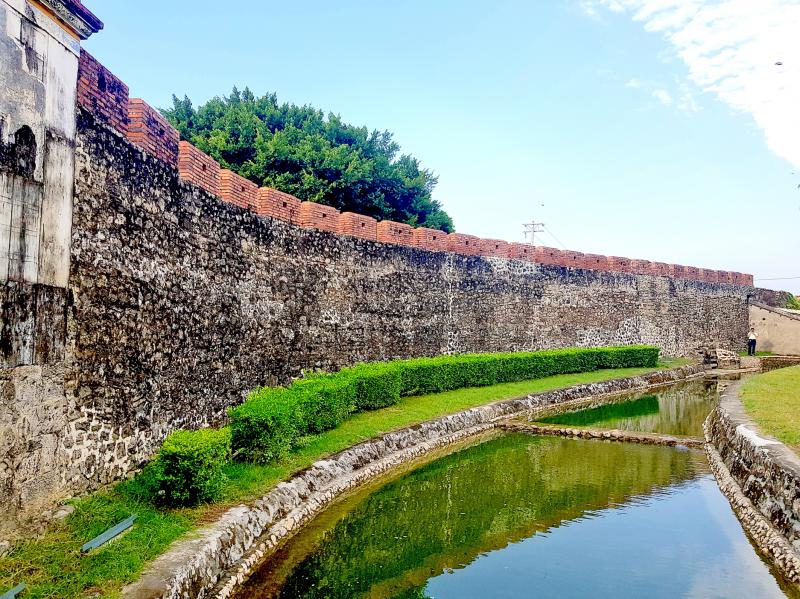
Photo: Tyler Cottenie
In the years that followed, traffic between the two settlements continued. The New City suffered from its share of attacks, and eventually the idea of fortifying the Old City with a stone wall and moving the government back again took hold. The stone wall was completed in 1826, but the government didn’t officially move back to the Old City for another 27 years. Meanwhile, the New City had erected its own walls and commerce was flourishing. For over a century, the Old Intercity Road was a vital link between these two population centers, for officials and commoners alike.
Before beginning the walk, the remains of the Old City’s walls in Zuoying District are worth checking out. Three of the original gates are still extant, as well as long sections of stone wall around the North and East Gates and a section of the city’s moat. A visit to The Center of Old Fongshan City History (見城館) inside the Old City walls is also highly recommended. It features a model of the Old City and its development, and a stunning multimedia presentation where the various iterations of city walls throughout the years rise out of or sink into the model floor, accompanied by other visual effects and narration.
OLD INTERCITY ROAD
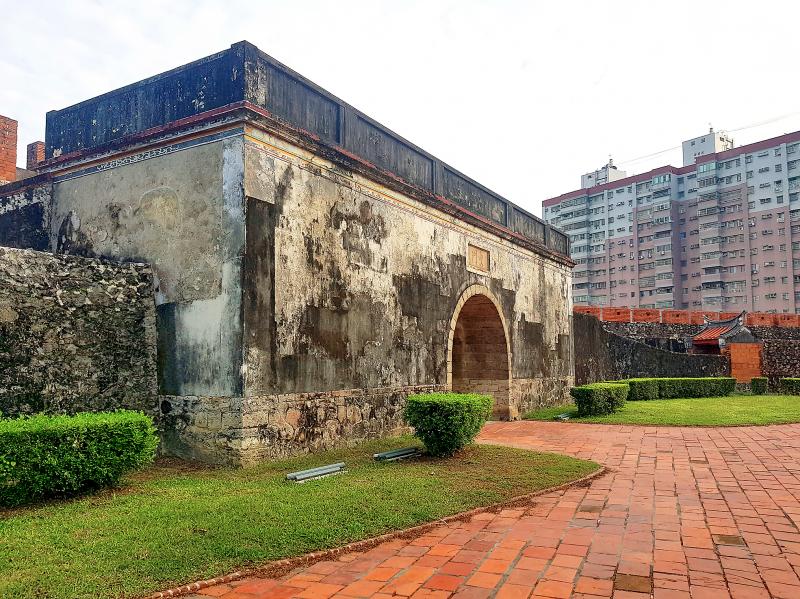
Photo: Tyler Cottenie
After exploring the remains of the Old City, leave the walled city through the East Gate, the starting point of the Old Intercity Road. At first, you will walk along the original route on the aptly named Dongmen Road (東門路: literally East Gate Road). However, this road is soon interrupted by a strip of railway land and a detour is required to get around to the other side, where Dongmen Road continues. With the TRA tracks now underground in Kaohsiung, the two halves of the road may soon be reconnected, restoring the continuous path leading to the East Gate that existed for over two centuries.
Next is the most interesting part of the entire route. Those who have been to Kaohsiung’s Ruifong Night Market (瑞豐夜市) and have an eye for detail may have wondered why the entire market seems to be laid out in parallel rows, except for one lane running at a shallow angle through the south-west side of the market, awkwardly dividing it. This angled lane is in fact part of the old road between the two seats of the former Fongshan County government. Where Qing officials once rode horseback on business and peasants urged cattle forward to market, tourists now snack on gua bao (割包), a steamed flat bun stuffed with stewed pork, and sip bubble tea.
Continuing eastward, except for a couple of small alleyways that seem completely out of place, the original route in this section has been erased and replaced by modern city streets in a grid. The Old Intercity Road crossed Love River (愛河) right beside the location of the current bridge on Zihyou Road (自由路), but the original Qing-era bridge has been dismantled with no trace remaining. East of the river, the original route follows modern-day roads for most of the next several kilometers, except where it passes through the schoolyards of two schools and is interrupted by National Freeway 1.

Photo: Tyler Cottenie
As one enters Fengshan District (鳳山區), the route is briefly lost in the middle of a park before picking up again in a strange, narrow passageway between two residential properties that is barely wide enough for two people to walk abreast. It then passes two religious structures named for one of the original Han settlements in the area, Chishan (赤山). The first is a quaint roadside temple, the Chishan Lower Village Fude Shrine (赤山下角頭福德祠). Soon after this, one arrives at perhaps the largest religious structure on the route, the Chishan Wenheng Temple (赤山文衡殿). Though the current structure is recent, the first temple was established here in 1795 during the reign of the Qianlong Emperor.
Finally, three to four hours after leaving the Old City’s walls, one reaches the original entrance to the New City of Fongshan County, which is now the downtown core of Kaohsiung’s Fengshan District. Though the North Gate here was dismantled during the period of Japanese rule and only a stone marker remains today, the site is impressive in a different way: It is now the site of the enormous, visually-stunning Fengshan Presbyterian Church. This 21st-century building stands in stark contrast to the 19th-century gate and moat at the other end of the Old Intercity Road.
For those who haven’t had their fill of local history, there are Qing-era sites in the New City worth exploring while you’re in the area. Though no sections of the wall remain, there are still several cannon emplacements, the Fongyi Academy (鳳儀書院), Taiwan’s second-oldest Longshan Temple (龍山寺), and one of the original stone gates, which is still open to two-wheel traffic.

Photo: Tyler Cottenie
Though much of the scenery along the Old Intercity Road is simply modern cityscape, it is still an effective gateway into understanding Taiwan’s rich history. For more information, a pamphlet on the route is available in Chinese at the Kaohsiung Cultural Center and the Takao Railway Museum. The Old City and New City endpoints can be accessed from the Zuoying (Jiucheng) and Fengshan TRA stations, respectively.
Route map: bit.ly/35jOVmu
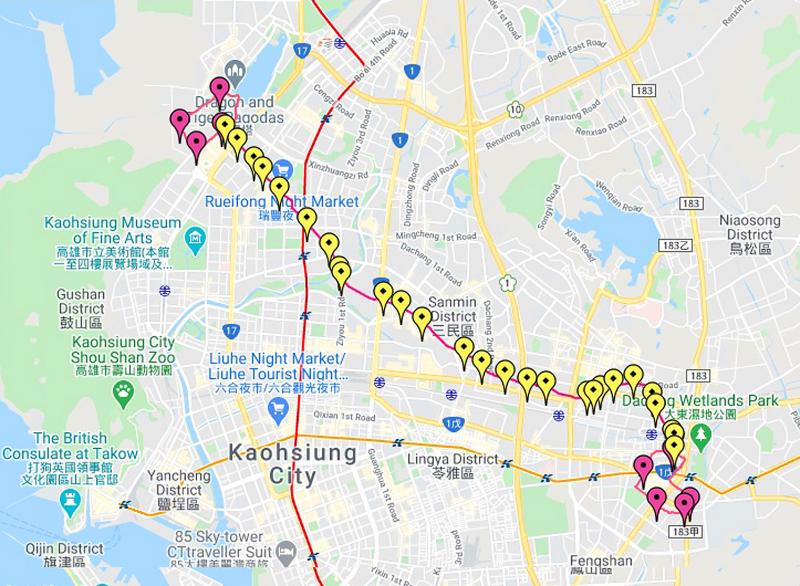
Photo: Screengrab
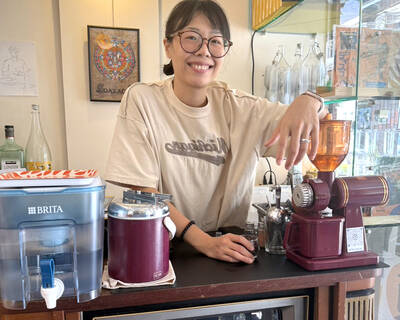
Cheng Ching-hsiang (鄭青祥) turned a small triangle of concrete jammed between two old shops into a cool little bar called 9dimension. In front of the shop, a steampunk-like structure was welded by himself to serve as a booth where he prepares cocktails. “Yancheng used to be just old people,” he says, “but now young people are coming and creating the New Yancheng.” Around the corner, Yu Hsiu-jao (饒毓琇), opened Tiny Cafe. True to its name, it is the size of a cupboard and serves cold-brewed coffee. “Small shops are so special and have personality,” she says, “people come to Yancheng to find such treasures.” She
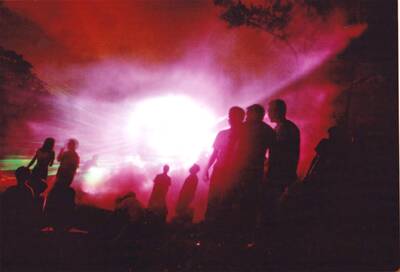
In July of 1995, a group of local DJs began posting an event flyer around Taipei. It was cheaply photocopied and nearly all in English, with a hand-drawn map on the back and, on the front, a big red hand print alongside one prominent line of text, “Finally… THE PARTY.” The map led to a remote floodplain in Taipei County (now New Taipei City) just across the Tamsui River from Taipei. The organizers got permission from no one. They just drove up in a blue Taiwanese pickup truck, set up a generator, two speakers, two turntables and a mixer. They

Former Chinese Nationalist Party (KMT) chairwoman Hung Hsiu-chu’s (洪秀柱) attendance at the Chinese Communist Party’s (CPP) “Chinese People’s War of Resistance Against Japanese Aggression and the World Anti-Fascist War” parade in Beijing is infuriating, embarrassing and insulting to nearly everyone in Taiwan, and Taiwan’s friends and allies. She is also ripping off bandages and pouring salt into old wounds. In the process she managed to tie both the KMT and the Democratic Progressive Party (DPP) into uncomfortable knots. The KMT continues to honor their heroic fighters, who defended China against the invading Japanese Empire, which inflicted unimaginable horrors on the
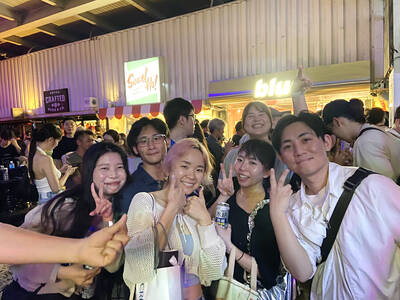
Hannah Liao (廖宸萱) recalls the harassment she experienced on dating apps, an experience that left her frightened and disgusted. “I’ve tried some voice-based dating apps,” the 30-year-old says. “Right away, some guys would say things like, ‘Wanna talk dirty?’ or ‘Wanna suck my d**k?’” she says. Liao’s story is not unique. Ministry of Health and Welfare statistics show a more than 50 percent rise in sexual assault cases related to online encounters over the past five years. In 2023 alone, women comprised 7,698 of the 9,413 reported victims. Faced with a dating landscape that can feel more predatory than promising, many in